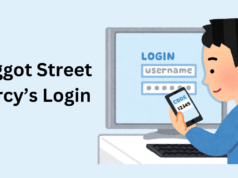Imagine a doctor drowning in a sea of data. Electronic health records stack high, genomic sequences flash on flickering screens, and wearable devices ping incessantly. This is the daily reality of modern healthcare.
And while the data deluge holds the potential for groundbreaking treatments and personalized care, its sheer volume creates a critical barrier: accessibility. This is where automated metadata management steps in.
It acts as a life raft, navigating the chaos and transforming raw data into actionable insights. This guide will dive deeper into the power of automated metadata management. It’ll explore how automation unlocks the true potential of healthcare data
What Is Metadata?
Think of metadata as the secret instructions for your data, the tiny tags that tell you what’s inside each file, image, or record. Without these labels, finding the right information in the medical maze is like searching for a very specific grain of sand on a beach.
From Messy Notes To Smart Software: The Manual vs. Automated Approach
Traditionally, managing these labels in hospitals was a tedious, manual process. This manual library approach led to errors, confusion, and wasted time.
But now, automation swoops in like a digital savior. Instead of humans struggling with paperwork, clever software takes over the heavy lifting.
- Discovering: Picture yourself on a data treasure hunt. The point? To unearth all the hidden data from every nook and cranny, even the overlooked spots.
- Extracting: This is all about grabbing the good bits and making sense of them.
- Classifying: Here, it’s like sorting your laundry into neat piles. You’re putting “lab results” here, “diagnoses” there, and “medications” in another spot.
- Tagging: Think of it as putting your personal spin on data with hashtags. By tagging terms like “high blood pressure” or “chest X-ray,” you’re making these bits of data easier to find later on.
- Governing: Ensuring data accuracy, security, and adherence to regulations, acting as the library’s “data sheriff”.
So, what does this “automated library” mean for healthcare?
Unlocking Faster Decisions And Better Care: The Benefits Of Automated Metadata Management
Automated metadata management comes with many advantages.
- Instant Information Access
Need a patient’s blood pressure readings from the past year? Just type it in and you get all the data neatly organized and ready to analyze. This scan save you precious time, allowing you to focus on what matters most – your patients.
- Boosting Accuracy And Trust
Automated tools go a long way towards guaranteeing that you get the all important data accuracy by following strict formats, minimizing mistakes and confusion. This means doctors can trust the information they see. This can lead to better diagnoses and treatment decisions.
- Fueling Collaboration And Research
Researchers from different hospitals can seamlessly analyze data across institutions to find new cures and treatments. That’s the power of automation! Sharing clean, organized data unlocks the potential for groundbreaking discoveries.
- Empowering Personalized Care
These automation tools enable medical health professionals to access correct information about a patient’s health state. This enables them to come up with personalized treatment plans, predict potential risks, and provide more focused care for each individual.
Challenges And Considerations
Here are a few of those:
- Privacy
Keeping patient data safe is top priority. You need to make sure automated metadata management tools are super secure, following all the rules like HIPAA. Think code locks, encryptions, and maybe even a firewall.
- Tech Integration
Hospital tech systems each have their own way of doing things. Integrating automation tools with these existing systems without causing glitches is key.
- Training Your Staff
Convincing doctors and nurses to switch from their trusty notebooks to automation can be tricky. You need to show them how automation saves time, reduces errors, and ultimately helps them give patients the best care possible.
Think demos, workshops, and maybe even incentives.
- Data Detox
Before automation can work its magic, you need to clean up and standardize the existing data. This can help to declutter the healthcare library and make sure everything’s in its rightful place.
- The Price Tag
New tech often comes with a hefty price tag. Healthcare organizations need to find cost-effective solutions and develop in-house expertise to make the most of automation tools. Think creative budgeting, data training programs, and maybe even bartering with other hospitals for a good deal.
These are just a few bumps on this road. But with careful planning, collaboration, and maybe a dash of ingenuity, automated metadata management can revolutionize healthcare.
In Closing
Think about a future where data unlocks personalized cures, predicts risks, and empowers patients. Automated metadata management is the key to turning this dream into reality.
So, embrace this data revolution! Integrate automation into your hospitals, your clinics, your trials. Where challenges arise, consult the data experts who’ve been down this road before. Their wisdom can go a long way towards helping you get it right.


















